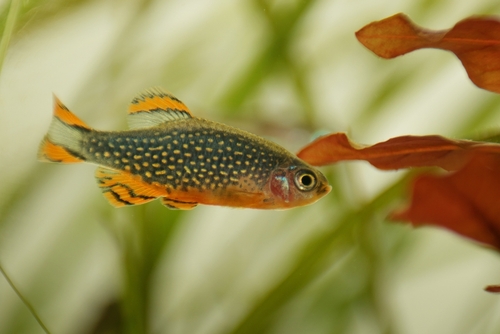Celestial pearl danios, also known as galaxy rasboras, are an excellent fish to keep in a community aquarium. They’re absolutely beautiful, super peaceful and very easy to take care of. These qualities make them ideal for beginners and newcomers to the hobby.
Here, we’ll tell you about the 15 best celestial pearl danio tank mates. These will involve various tetras, shrimp and other types of danios along with honey gouramis, harlequin rasboras, pygmy hatchetfish and so many others.
As long as the species you’re looking at has similar water parameters and claims a separate area within the aquarium, celestial pearl danios will complement them. In fact, there are so many from which to choose, we couldn’t fit all the available choices on our ultimate list.
Contents
15 Best Celestial Pearl Danio Tank Mates ~ What You Need to Know
To understand which tank mates work best with celestial pearl danios, you should know a few things about them. These adorable fish come from the cool freshwater regions around northern Thailand and Myanmar. They have blue iridescent bodies that are narrow with pearly dots and orange-to-red lined fins.
So, when considering other fish to cohabit a tank with them, you may want to think about color and presentation. Therefore, the fish we selected will create a wonderful visual experience while also presenting the most peaceful tank environment possible.
Temperament
Celestial pearl danios are very peaceful and super shy, preferring to hide beneath the brush and foliage of their favorite plants or other decorations. The only time they really come out is to eat or when they feel like shoaling with others of their own kind. If they’re very comfortable, they will interact with roommates of a different species.
Size
A mature celestial pearl danio reaches barely an inch on average. This makes them too small to eat or chase others living with them but they will become dinner for larger species. Their size translates to requiring a small tank. However, there should be enough space for plants and decorations along with serving the requirements of other roommates.
Competition
The reason why celestial pearl danios are so desirable is the fact that they get along with most other fish. The only things that intimidate them are larger and more aggressive fish. However, the males tend to spar with each other often but the females are quite serene.
Parameters ; Tank Setup
A group of up to 10 celestial pearl danios can fit comfortably in a 10-gallon tank with beaucoup greenery and other prime hiding spaces. But, if you’re going to create a community tank, you will want to accommodate the needs and requirements of the other species.
The ones in the subsequent list below will push the tank size to at least 20 gallons or more. But, the tank doesn’t need to be fancy or involved for celestial pearl danios (or CPDs) and you want to ensure it has a low to medium amount of water flow. The following is the basic conditions best for CPDs:
- Temperature: 71°F to 78°F (22°C to 25.5°C)
- pH Balance: between 6.5 and 7.5
- Water Hardness: 1 to 5 dGH
- Substrate: Fine, soft sand; preferably dark
15 Best celestial pearl danio tank mates
You will also like these other related posts:
- Black Ghost Knife Tank Mates
- Leopard Bush Tank Mates
- Paradise Fish Tank Mates
- Bumblebee Cichlid Tank Mates
1. Emerald Dwarf Rasboras
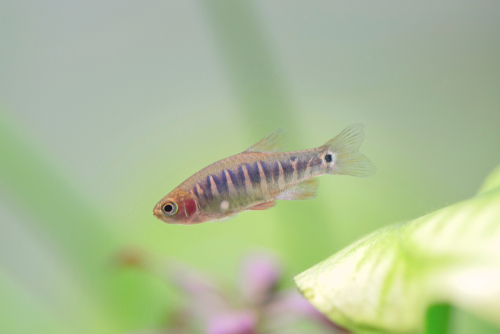
- Scientific Name: Danio erythromicron, Celestichthys erythromicron
- Adult Size: Around 1½ inches
- Compatible with: Bettas, Shrimp, Celestial Pearl Danios
- Care Level: Easy/Beginner
- Origin: Myanmar
Since both emerald dwarf rasbora and celestial pearl danios come from the same area of the world, they have almost the exact same water parameter requirements. They make a lovely contrast against the coloring of celestial pearl danios too. Because they’re cousins, it’s not uncommon to see them shoal together.
2. Amano Shrimp
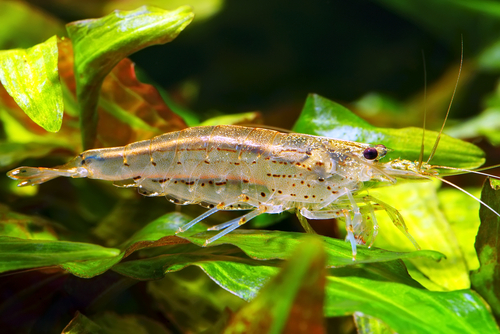
- Scientific Name: Caridina multidentate
- Adult Size: Up to two inches
- Compatible with: Any peaceful species of the same size
- Care Level: Easy/Beginner
- Origin: Japan ; Taiwan
Amano shrimp are hearty algae eaters and bottom feeders. They’re so peaceful, they rarely get upset or stressed. All of these qualities are what make them excellent for cohabitation with celestial pearl danios. However, only add adult Amano shrimp or your CPDs will eat them.
3. Pygmy Hatchetfish

- Scientific Name: Carnegiella myersi
- Adult Size: Up to one inch
- Compatible with: Cory Catfish, Tetras, some Cichlids
- Care Level: Easy/Beginner
- Origin: South America
Of all varieties of hatchetfish, pygmies are the most delicate. Even though they come from a separate area of the world than celestial pearl danios, they have very similar water parameters. However, pygmy hatchetfish require pristine conditions and particular care toward their water parameters is crucial.
4. Chili Rasboras
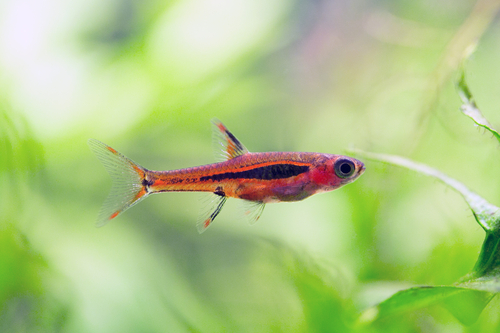
- Scientific Name: Boraras brigittae
- Adult Size: No larger than ¾ inches
- Compatible with: Neon Rasboras, Cory Catfish, Snails, Amano Shrimp
- Care Level: Easy/Beginner
- Origin: Indonesia ; Borneo
For a gorgeous red contrast and highlight for celestial pearl danios, chili rasboras turn your aquarium into a living work of art. Plus, housing them together is easy since they have near exact water parameter requirements. They’re very healthy, hardy and tolerant as long as they have enough plants and décor to hide in.
5. Ember Tetras

- Scientific Name: Hyphessobrycon amandae
- Adult Size: Slightly more than ¾ of an inch
- Compatible with: Cory Catfish, Molly Fish, Guppies, Neon Tetras
- Care Level: Easy/Beginner
- Origin: South America, Brazil
Ember tetras are earthy orange-colored jewels of the Amazon Basin. So, their appearance with celestial pearl danios can make for a very aesthetic aquascape. They’re peaceful and will interact with other tranquil roommates, like CPDs. The only issue with keeping them is that they like things more acidic.
6. Neon Tetras
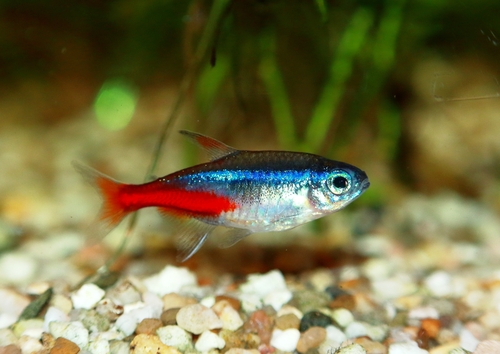
- Scientific Name: Paracheirodon innesi
- Adult Size: Up to 1½ inches
- Compatible with: Danios, Rasboras, Cory Catfish
- Care Level: Easy/Beginner
- Origin: Blackwater basins of the Amazon River in South America
Shy and peaceful, neon tetras are some of the best choices to house with celestial pearl danios. They have similar temperaments, water parameters, tank sizes and pH balance requirements. However, because they like blackwater, it’s essential to add tannin-leaching decorations like driftwood.
7. Harlequin Rasboras
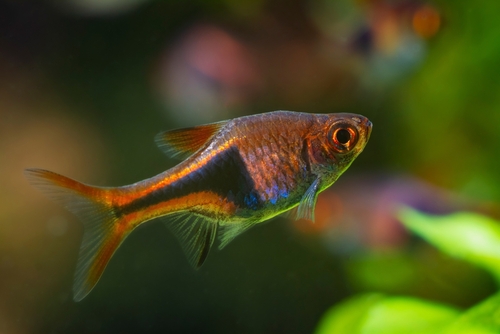
- Scientific Name: Trigonostigma heteromorpha
- Adult Size: Between 1¾ and 2 inches
- Compatible with: Tetras, Danios, Gouramis, Molly Fish, Kuhli Loaches, Cory Catfish
- Care Level: Easy/Beginner
- Origin: Southeast Asia
Harlequin rasboras come in a range of pink, coral and orange, which make a lovely color contrast against celestial pearl danios. They also share a love of warm water along with balanced acidity and plenty of plants for resting and hiding. Harlequins are very peaceable creatures and one of the most popular fish for a community tank.
8. Endler’s Livebearers

- Scientific Name: Poecilia wingei
- Adult Size: Just under two inches
- Compatible with: Tetras, Rasboras, Danios
- Care Level: Easy/Beginner
- Origin: Venezuela
Since endler’s livebearers are cousins to molly fish and guppies (also excellent to house with CPDs), they are easy to care for. Their beauty and simplicity are beautiful in a tank with celestial pearl danios. But, they are difficult to locate and aren’t as common as others in their genus.
9. Blue Lyretail Killifish
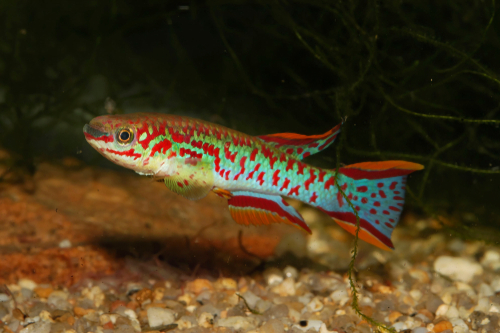
- Scientific Name: Fundulopanchax gardneri
- Adult Size: Around two inches
- Compatible with: Danios, Gouramis, Snails, Molly Fish, Swordtails
- Care Level: Easy/Beginner
- Origin: Africa; Nigeria ; Cameroon
Hailing from the freshwater ponds and streams around the Savannah, these wonderfully blue to violet colored fish make wonderful tank mates for celestial pearl danios. They suit each other well, don’t get in each other’s way and interact together in a friendly fashion.
10. Cory Catfish
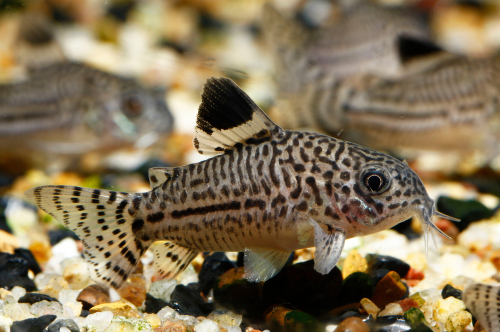
- Scientific Name: Corydoras geoffroy
- Adult Size: Just under three inches
- Compatible with: Rasboras, Tetras
- Care Level: Medium/Intermediate
- Origin: South America; Suriname ; French Guiana
These peaceful greenish bronze catfish are perfect tank mates for any aquarium. Although they are bottom feeders, they will surface to grab a few gasps of pure oxygen. Other than that, they won’t bother celestial pearl danios and both species enjoy similar water requirements.
11. Apple Snails
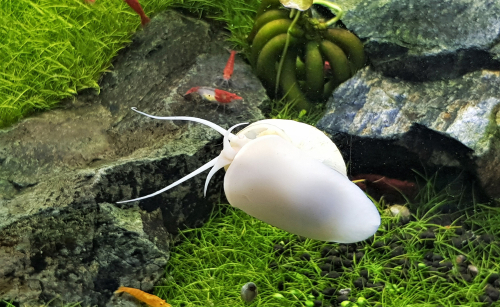
- Scientific Name: Pomacea canaliculata, P. bridgesi, P. paludosa, Pila conica
- Adult Size: Between two and six inches
- Compatible with: Honey Gourami, Cory Catfish, Neon Tetras, Rasboras
- Care Level: Easy/Beginner
- Origin: South America, North America, Central America, Africa, Asia
As the biggest freshwater snail on earth, any variety of apple snails makes an excellent tank mate for celestial pearl danios. They simply stay at the bottom of the tank and eat leftover food, rotting waste and algae from substrate, rocks and the sides of the tank.
12. Cherry Shrimp
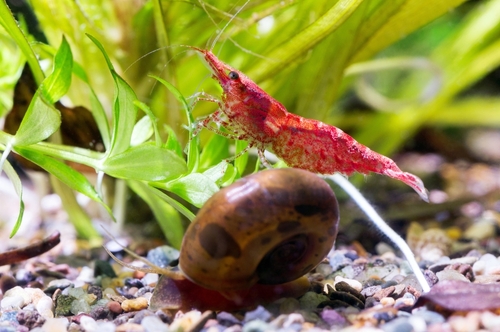
- Scientific Name: Neocaridina davidi
- Adult Size: 1½ inches
- Compatible with: Rasbora, Cory Catfish, Otocinclus Catfish, Clown Plecos
- Care Level: Easy/Beginner
- Origin: Taiwan
Another great tank mate for celestial pearl danios is the cherry shrimp. Not only are they peaceful but they make for a wonderful housekeeping crew. They’re hardy and do well in a wide range of aquatic environments. Cherry shrimp are one of the most common inhabitants of home aquascapes.
13. Honey Gouramis
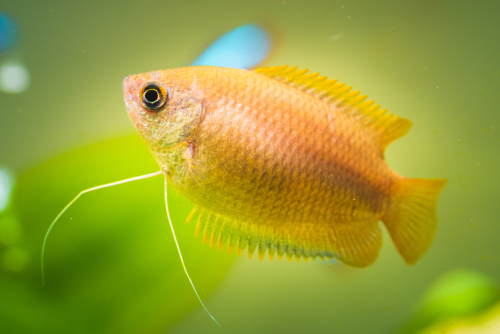
- Scientific Name: Trichogaster chuna
- Adult Size: Up to two inches
- Compatible with: Guppies, Molly Fish, Danios, Rasboras
- Care Level: Easy/Beginner
- Origin: Bangladesh ; India
These beautiful and hardy yellow fish go by many names like red flame gourami, sunset gourami and red honey gourami. They are very tolerant of a wide range of water parameters along with being peaceful and active. They won’t bother celestial pearl danios in the least.
14. Sailfin Molly Fish
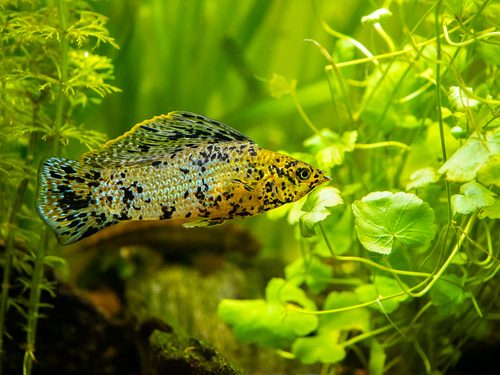
- Scientific Name: Poecilia latipinna
- Adult Size: Around five inches
- Compatible with: Endler’s Livebearers, Swordtails, Ember Tetras, Neon Tetras, Harlequin Rasboras, Danios, Cory Catfish, Cherry Barbs
- Care Level: Easy/Beginner
- Origin: North America
Sailfin molly fish are a very desirable tank mate for most community aquariums due to how easy and friendly they are. Therefore, they are great with celestial pearl danios. Plus, they can tolerate a wide range of water conditions and tank setups.
15. Glowlight Danios
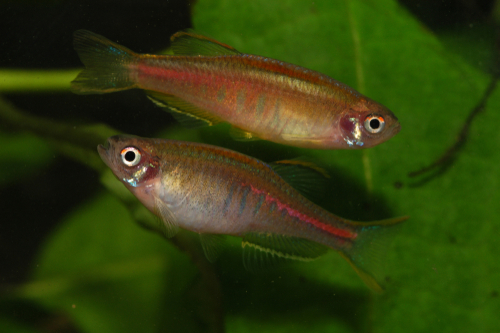
- Scientific Name: Danio choprae
- Adult Size: Barely over one inch
- Compatible with: Any small, calm and peaceful species
- Care Level: Easy/Beginner
- Origin: Northern Myanmar
Glowlight danios have very similar preferences and sizes as celestial pearl danios. Their difference is in body patterns and colors. If you choose to house these two together, ensure the tank is at least 20 gallons with a plentitude of plants and decorations.
Summary
This list of the 15 best celestial pearl danio tank mates above is far from exclusive. In fact, as long as the fish you’re considering are friendly, peaceful and about the same size, they’ll do well together. If you want a more aggressive roommate, ensure the tank is big enough with foliage for the danios to hide.

Ian Sterling, founder of Fishlab.com, began his aquarium journey over 30 years ago, driven by a deep fascination for fish and their diverse personalities. His website, Fishlab.com, is dedicated to making fishkeeping accessible and enjoyable, offering beginner-friendly guidance, expert insights, and a community for aquarists to connect and share experiences.


